Kochi Japan Travel Guide and Top Things to Do
This website uses affiliate links which may earn a commission at no additional cost to you. As an Amazon Associate I earn from qualifying purchases.
Updated: 10th March 2020
She was still smiling, but now had a new confused expression on her face. I sensed her hand tightening on my documents. ‘But why there? How do you know these places? Who told you about them?’ she asked, intrigued.
I reminded myself this was customs, not immigration, and it was surely more curiosity than concern. I laughed, somewhat nervously, and explained how I love exploring the lesser visited parts of the country. Being Japan, the smile never faded, and she handed back my forms and waved me on my way to get my connecting flight to Kochi. Away from the bustle of Tokyo, Kochi is a land of nature, a land of green and blue. Home to epic pilgrimages of beautiful temples, water-sport adventures, traditional Japanese experiences, lots of hidden gems and a wellness destination in its own right.
If you are looking for a more authentic side of Japan, with plenty of mother natures finest work thrown in, here is a guide to plan a visit to the region, that can easily keep you entertained for more than a week!
Top things to do in Kochi Prefecture
The Kochi Prefecture can be broken down in to various regions, but to keep it simple, here I’ve detailed it as North, Central, City and South. The capital of the Prefecture is also known as Kochi, which can make things confusing, and while there is public transport, a car will help if you want to pack plenty of the below into your trip. Check my ‘getting around’ advice below to further plan your trip.
Kochi City
The capital of the region, Kochi City is a relatively compact city, and you can explore the highlights in one day.
Kochi Castle
There is a reason this Castle, one of around a hundred in Japan, is so unique. Once upon a time, some five thousand castles could be found across the country, and Kōchi Castle is one of the best-preserved you can find here nowadays. Construction of the Castle dates back to 1601, but following a tragic fire that near destroyed it, it was fully restored to all its glory during the Edo period.
More Info | TeamLab Digital Event | Location | On foot
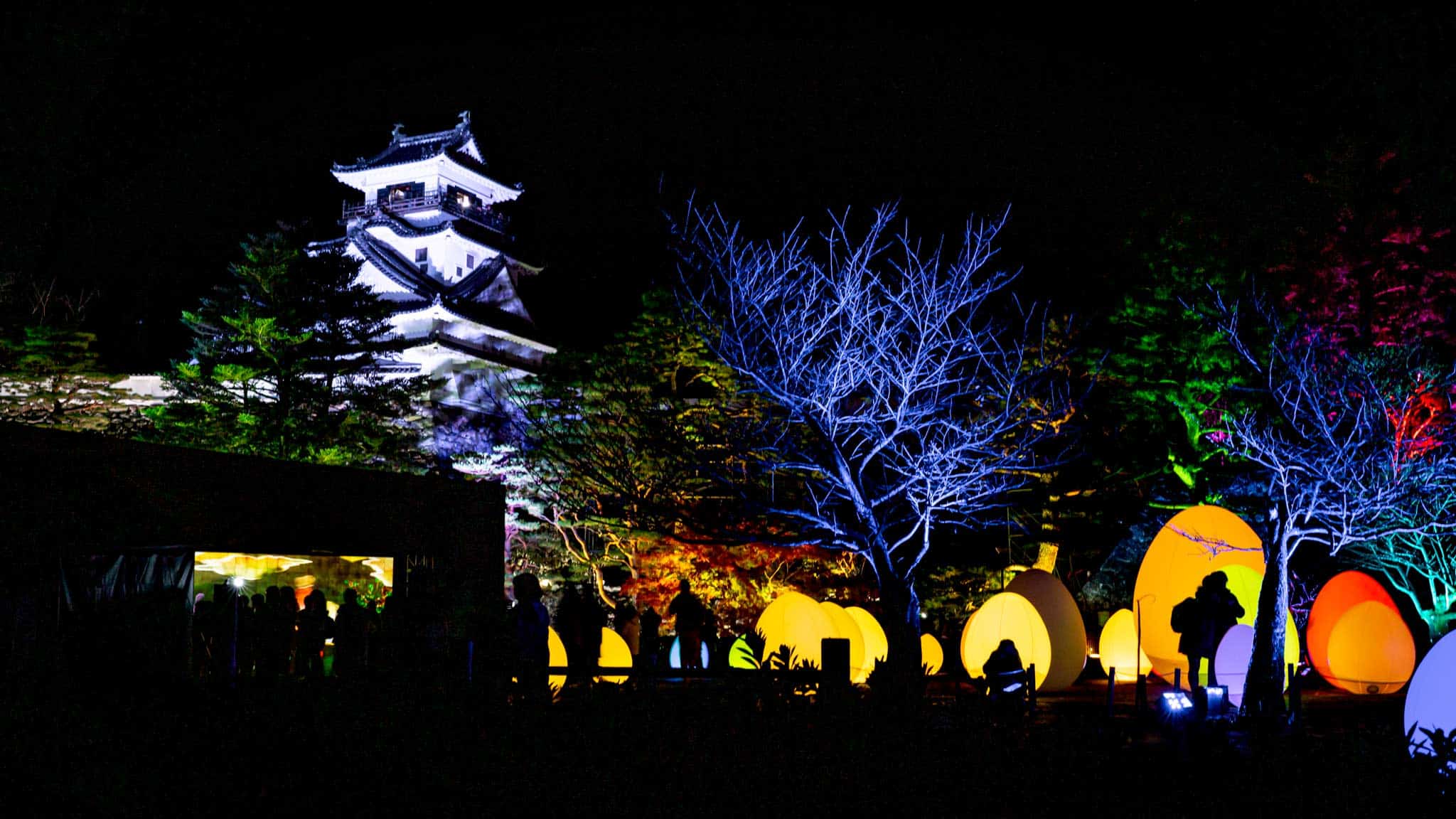
Kochi Castle Museum of History
Sitting just across from the castle itself is the Museum of History, where you’ll learn all about the prefecture and the Tosa rule.
More Info | Location | On foot
Yosakoi dance centre (and festival)
Every August the city of Kochi comes alive for the Yasakoi dance festival with some 300 groups performing to crowds of thousands. The streets and corners of the city are taken over, as competitions to crown the best play out on domestic news channels.
Dating back to 1954, the festival was a chance to bring everyone together after a painful time. It’s blossomed and grown over the years, and now takes place worldwide, although it originals hail from Kochi. Elaborate costumes and well-rehearsed routines are more significant and bolder than when the festival first started, but the rules remain the same.
The dance must use the Naruko, a type of clapper within the dance. The music can be as wished but must include part of the original song. Also, a vehicle acting as a float must accompany the group playing the music. The dance groups can be up to 150-strong, and this makes for a flurry of colour and music over the days the event runs.
If you don’t visit Kochi during the festival, but want to learn more about the Yosakoi, a brand new museum is now open, and although a lot of the information isn’t in English, guides can help, or you can just have a go at the dance in the ‘classroom’, see the bright costumes, and watch performance videos from years gone by.
Museum & Festival Info | On foot
Sunday Market (and fried sweet potato)
If you find yourself in Kochi on a Sunday morning be sure to visit the Sunday Market, which runs along the length of one of Kochi City main streets, with the traffic diverted. Here you’ll find some small gifts, but it it is mainly a local farmers market serving food and drink. Be sure to try the local specialities, the ginger ale and the delicious fried sweet potato snacks, they will be worth the wait in line for.
More Info | Location | On foot
Hirome Market
The hub of evening activity in Kochi is the lively Hirome Market. The people of Kochi love to drink, and they have some very cool drinking games to prove it. Here you’ll find everything from region to national dishes, in both cheaper, street food style, and more fancy table service restaurants.
More Info | Location | On foot
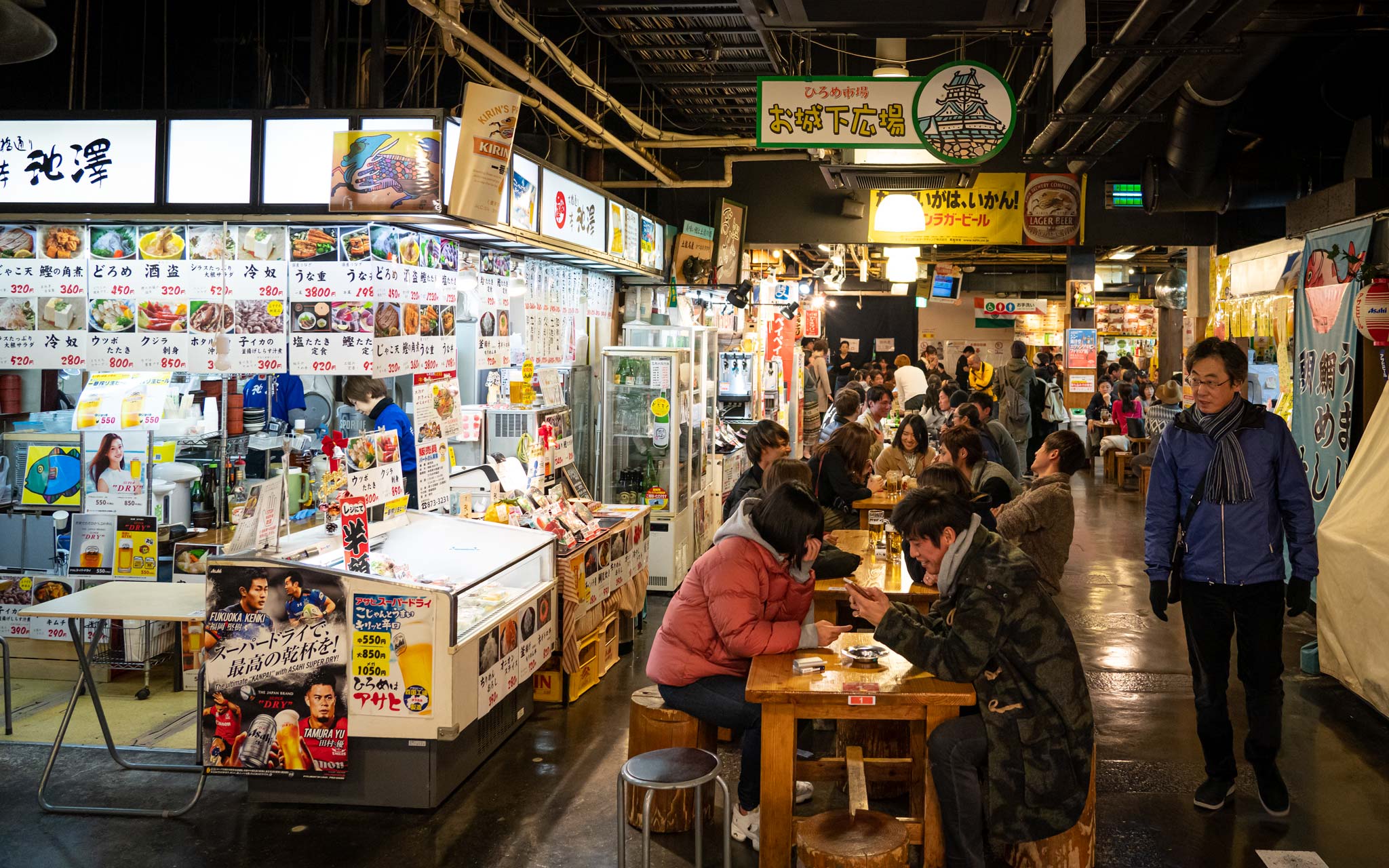
Chikurinji Temple
This beautiful temple is on of the 88 on the island wide pilgrimage, and if you’re lucky, like I was, you’ll encounter one of these groups of pilgrims in their conical hats and white outfits here. The temple itself is a red, five-tier pagoda, set amongst the stunning setting of colourful trees and peaceful park.
More Info | Location | Car or nearest station: From either Sakamotozen Bus Stop or the Nishi-Takasu Tram Station it’s a short walk.
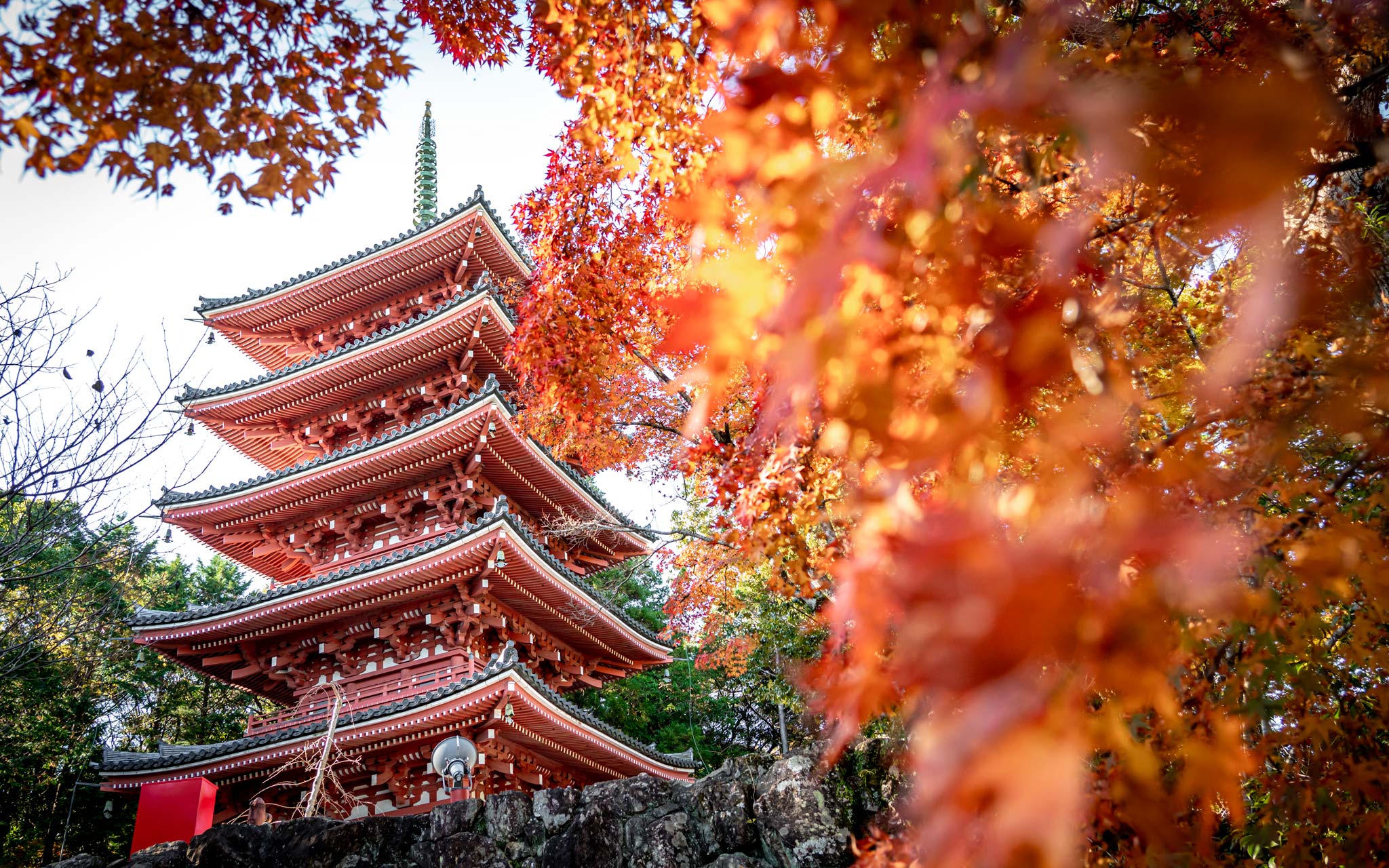
Makino Botanical Gardens
Located just next to the temple are the Makino Botanical Gardens, a tranquil place and being not far from the airport, a good place to stop off before your flight out of Kochi if you have some spare time.
More Info | Location | Car or nearest station: From either Sakamotozen Bus Stop or the Nishi-Takasu Tram Station it’s a short walk.
Kochi Prefecture – North
Mainly defined by farm lands and the striking rock formations of Muroto Global Geo-park, the north of Kochi Prefecture is a place to relax, embrace the ocean, and pamper yourself.
Ioki Cave
Just off the side of the road is Ioki Cave, and you could very easily miss it. Park up at the little car-park where you’ll be able to don some Wellington Boots before crossing the road and disappearing into a different world. A short walk through the open rock face will bring you to little waterfalls, bamboo trees, and lush vegetation – almost unbelievable given its road side location!
More Info | Location | Car or nearest station: Ioki Station and Short Walk
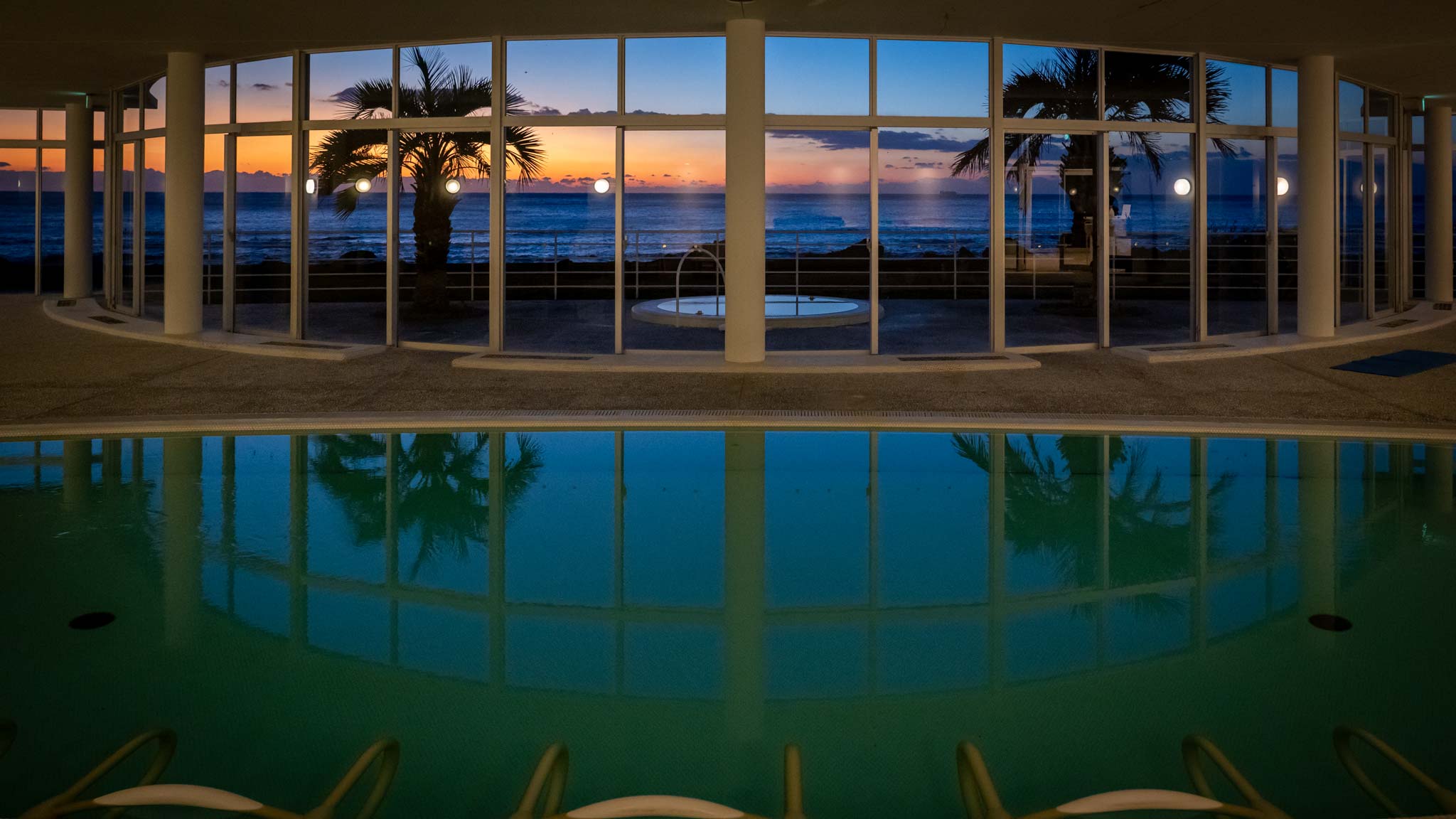
Utoco Deep Sea Therapy Centre and Spa
See below in the ‘Hotel’ section – but this is one of the most relaxing and beautiful resorts I’ve ever stayed in!
More Info | Location | Car or nearest station: The bus station Takaoka is the nearest to the hotel, but you may prefer to take the train and then a taxi from the end of the route.
Muroto Global Geopark
The Muroto Global Geopark is UNESCO listed and this beautiful space of green trees meeting dramatic coastline is best explored on foot or by bicylces. Thousands of years of ocean activity has developed condensed rocks in all sorts of patterns, and between this nature and the wellness resorts, it’s a perfect ‘get away from it all’ kinda place.
More Info | Location | Car or nearest station: See Utoco above
Hotsumisakiji Temple
Another stop on the island wide pilgrimage, from Hotsumisakiji you get some breathtaking views over the ocean and Muroto Geopark, head to the nearby lighthouse to really take it in. Inside the temple are a few wooden structures, including the bell rung by those on the pilgrimage which the caretaker allowed me to ring. It’s a very peaceful and spiritual spot amongst nature.
More Info | Location | Car or nearest station: See Utoco above
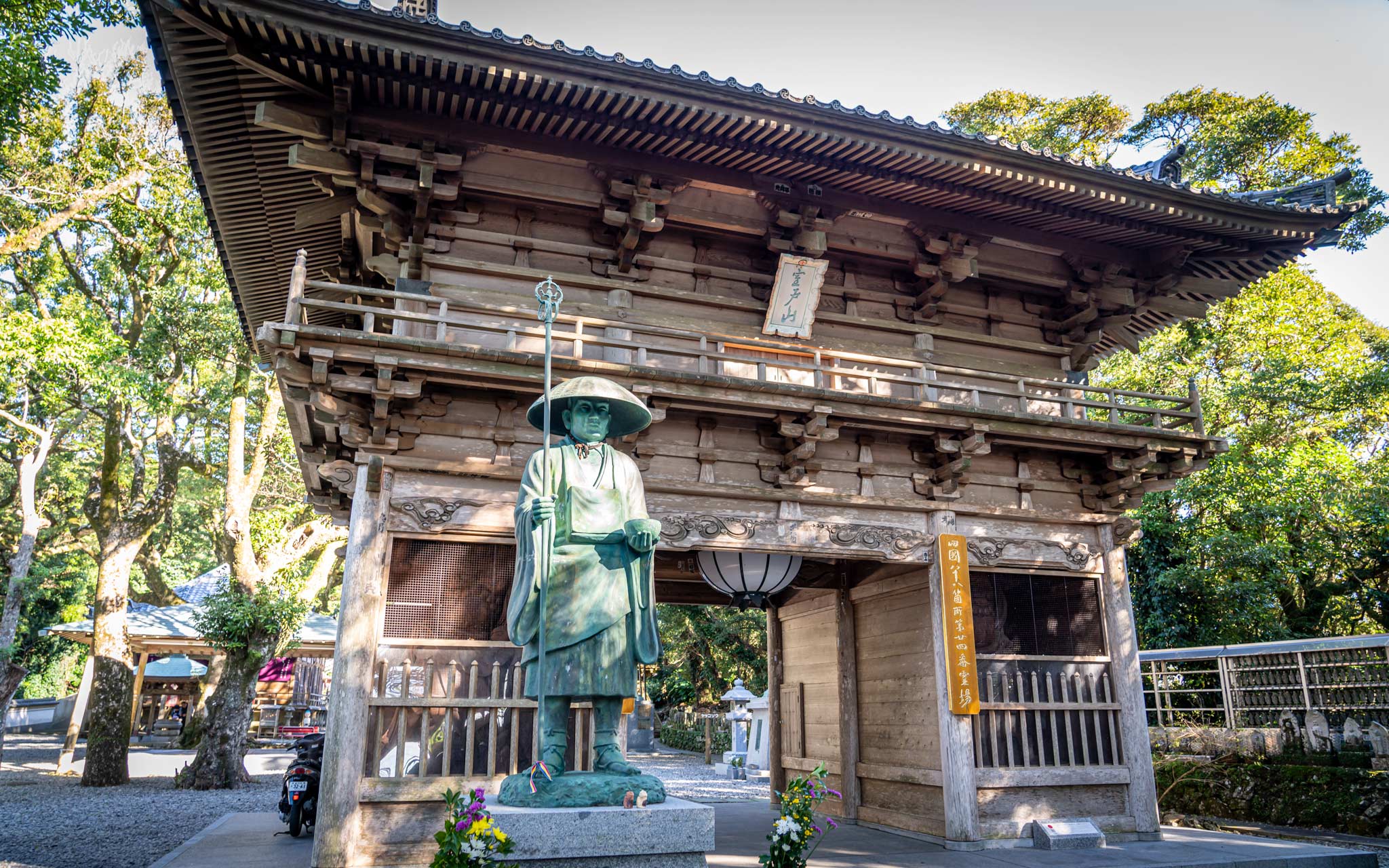
Sea House Restaurant
This beautiful restaurant is quite simple inside with its menu, but the glass and metal box of a restaurant hanging over the cliffside provides incredible views in all direction, including down, to the silver sands and blues of the ocean. Great for Instagram, bad for vertigo!
Location | Car or nearest station: Nishibun Train station and a short walk along the coast
Open-sided trains
One of the coolest ways to get around the North of Kochi where the train lines run are the open-sided trains. It should be noted only a couple of services a day run with the open-sided trains, so be sure to get the correct information and timings for the day. You’ll board and sit as normal, but once the train is moving, you are able to step onto the deck and breath in the ocean breeze, just be prepared for the tunnels to destroy your ears!
More Info | Various boarding points along the coast
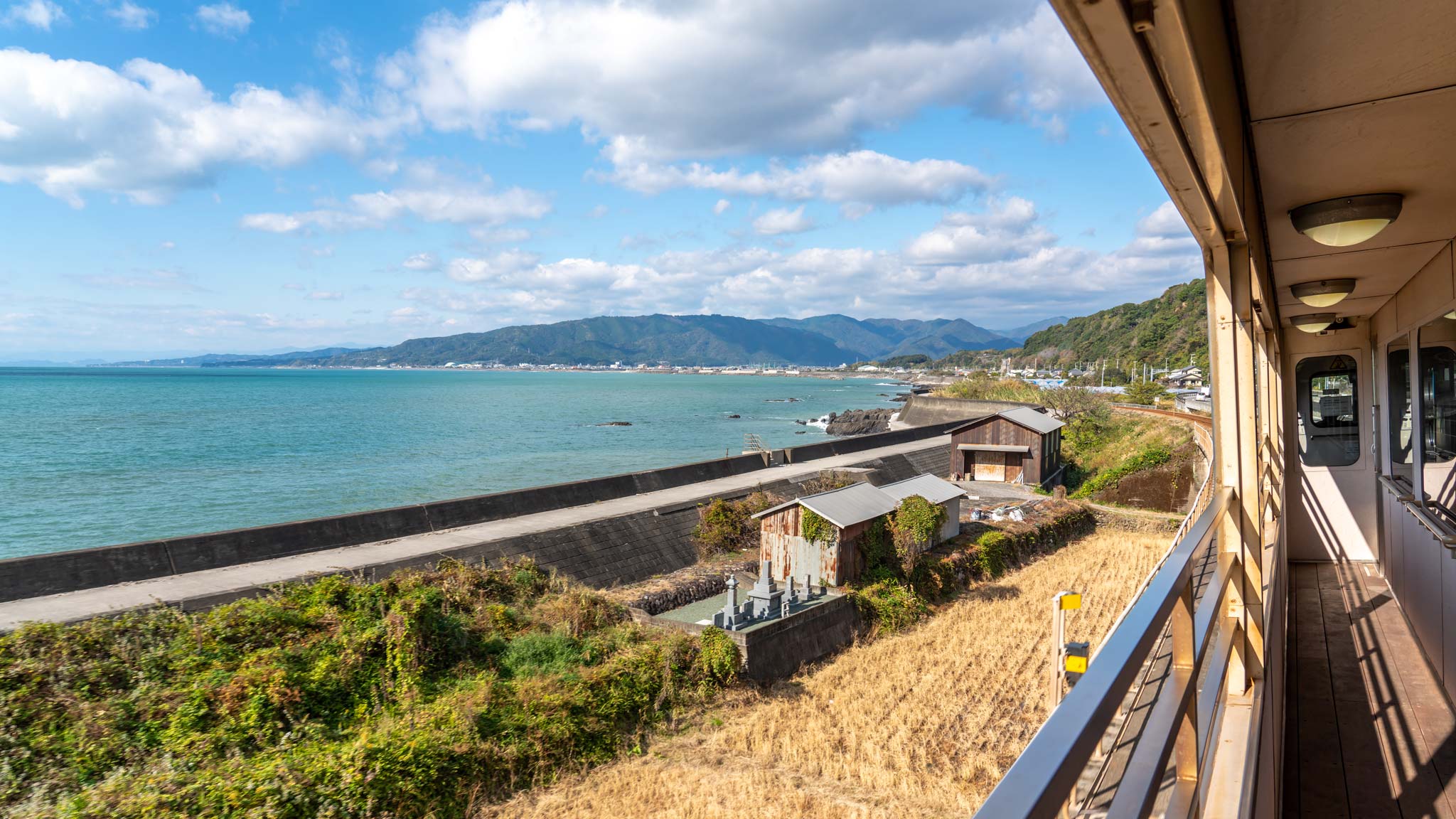
Ekin Museum (and festival)
The Ekin Museum offers an insight into the artwork and life of Hirose Kinzō (also known as Ekin), a disgraced official painter whose career turning into something quite interesting after his royal downfall. Ekin was born into a working-class family in Kochi but eventually wound up as a head painter for the important family at the height of the Tosa Domain. He was accused of forging work, and fired from his role, then disappearing from the public eye for ten years.
Eventually, he reappeared with this very unique, and sometimes quite disturbing artworks, projecting multiple scenes from one story onto one large canvas.
While copies of the works can be seen in the museum year-round, In July, a festival takes place on the streets of Akaokacho, where the original paintings are taken outside and illuminated by candlelight in the traditional way. Locals and regional tourists especially flock for this eerie evening of arts and entertainment, so if you find yourself in Kochi in July, check out the festival dates to join in.
More Info | Location | Car or nearest train station: Akaoka Station
Kochi Prefecture – Central
The central part of Kochi is defined by green trees and rich rice terraces, incredibly clear waters, adorable little towns and karst mountains.
Nakatsu Gorge and Valley
The Nakatsu Valley was the first stop of our mountain day, as we headed to the tea-terraces and national parks. This short hike takes you into the valley, past the giant rocks resting in the crystal clear waters. Blue and green pools are broken by colourful plants and buddha statues, before reaching a waterfall at the end, highlighting the unique purple colour of the rocks in the valley. There is an extended hike you can do, going steeper and further into the valley.
More Info | Location | Car or nearest station: From Mitsumineguchi Station you can change to a local bus, travel time around 1 hour.
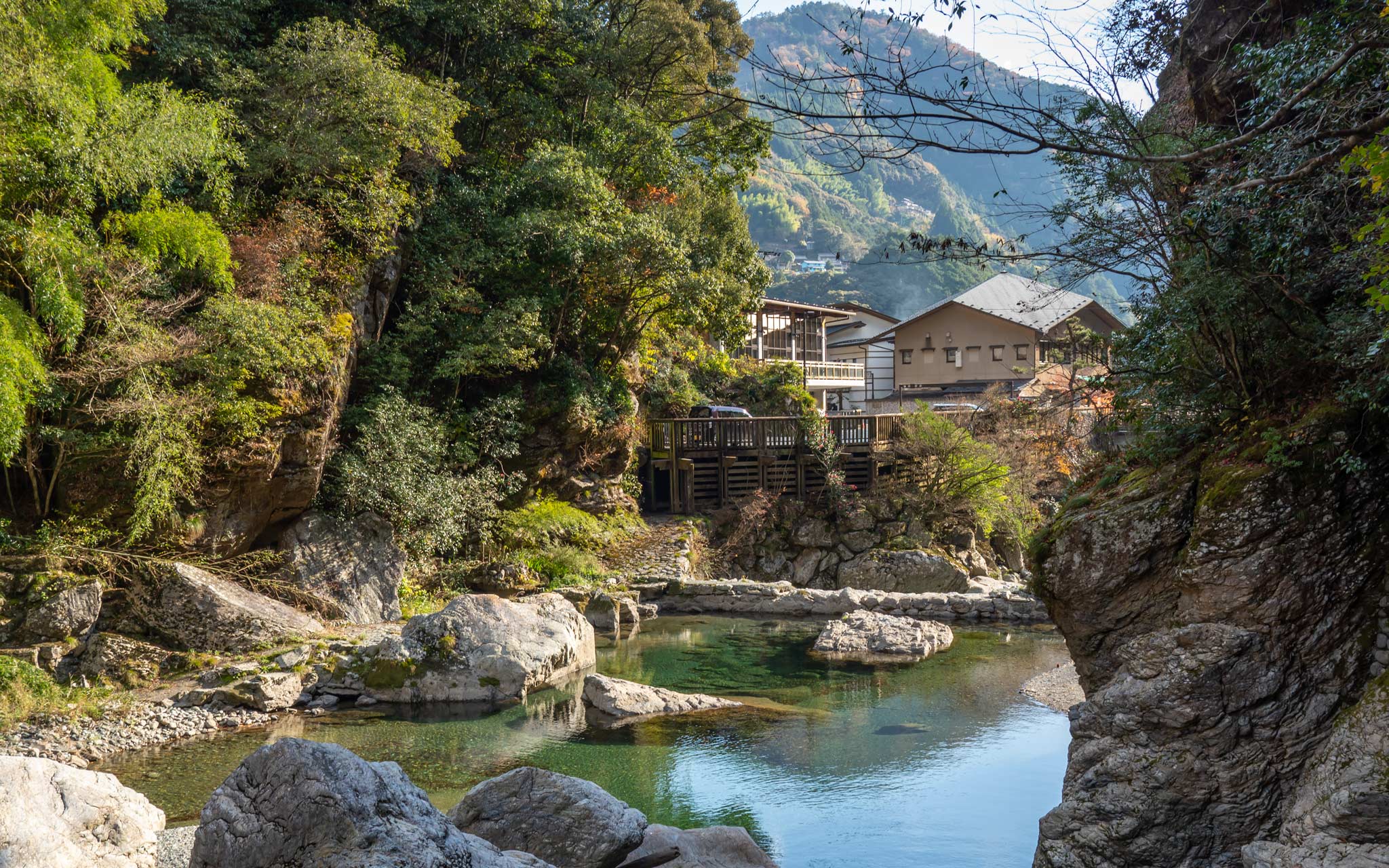
Niydo Blue and River
Niydo Blue is a colour, known in Japan, due to the waters here. I spent most of my time with the waters of Shimanto, but the Niydo area offers water-sports and activities as an alternative.
Asunaro Matcha Noodle Restaurant
At Asunaro, a cafe which commanded an impeccable view of the terraces, mountains and a vast lake, we braved the outside winter temperatures wrapped in blankets to appreciate the vistas fully. The tasty green both with thick juicy noodles we were served was exquisite, and the high antioxidant, metabolism-boosting, mind-calming Matcha dish went down a treat.
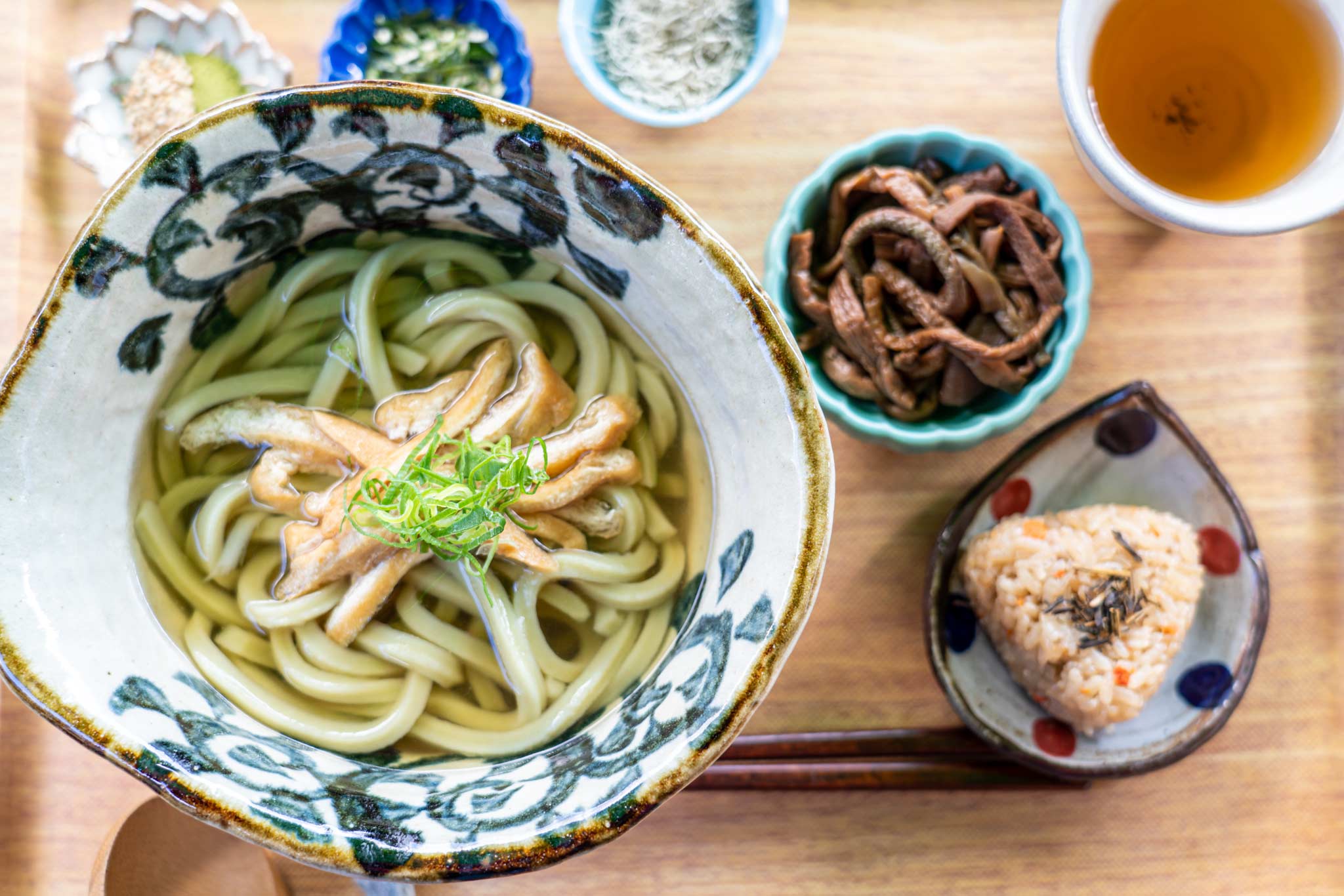
Tengu Highlands forest therapy road
In Japan, wellness rules, and the Tengu Highlands forest therapy road is a fancy name for a pathed walk through the forest of the national park, where trees and fresh-air are the order of the day for your wellness therapy.
More Info | Location | Car or nearest station: You’ll want a car to get to and around the park
Shikoku Karst Natural Park
Full of karst rock formations, forest, and vast empty spaces at altitude, the Shikoku Karst National Park stretches across the Kochi boundaries and was about as un-Japan like as I imagined, almost like Switzerland at times. Given it’s a bit out the way, it’s certainly more popular with domestic tourists looking for a mountain escape, than international tourists.
More Info | Location | Car or nearest station: You’ll want a car to get to and around the park
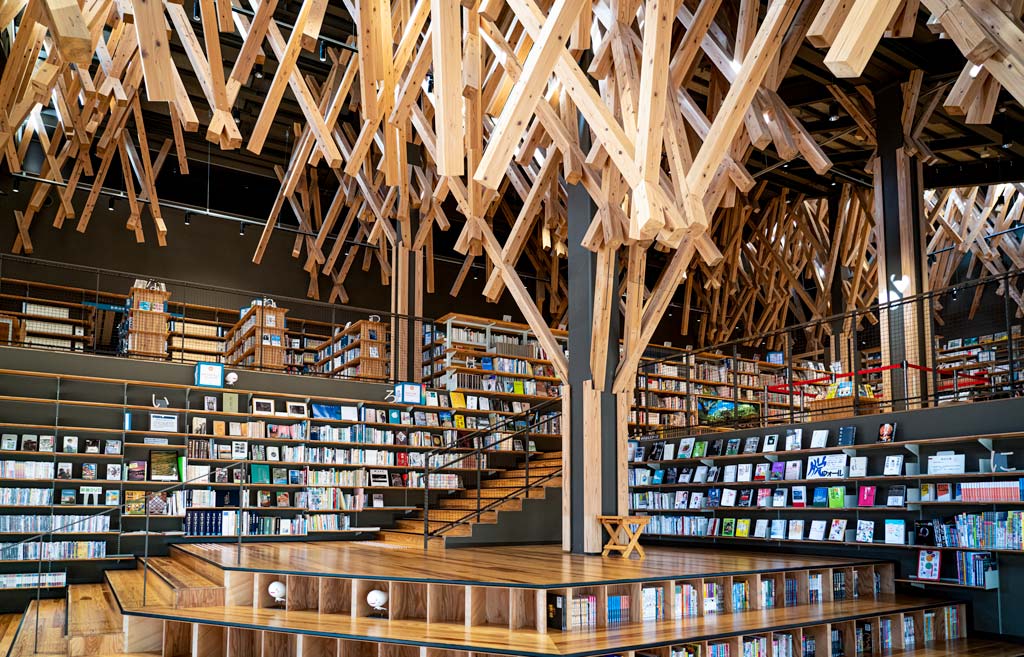
Yusuhara Town and Library
What I wasn’t expecting during my trip to Japan was to stumble upon a library designed by no-less than the man behind the Tokyo 2020 Olympics Stadium, Kengo Kuma.
Located in the beautiful village of Yusuhara, made even more magnificent thanks to it’s forested mountain setting and buried electricity cables, rather than over hanging like much of the region, this picturesque library is a homage to the woodwork the renowned artists likes to design with. In fact, there are more buildings of his work here, including a museum in his dedication. The library itself is a warm, open place, with dramatic wooden beams erupting from the ceiling, a grand piano at the entrance, and cosy corners to settle into. The wooden cube-like design outside is equally as striking, and it fits in perfectly with the nature of this region, which is well worth a visit for many other reasons beyond the library.
More Info | Location | Car or nearest station: From Kochi, you’ll need to train to Suzaki, and then bus – around 2 hours total
Motoyama Montbell Village
Set along the Yoshino river, Motoyama is a region inland, and I headed here to visit the recently opened Montbell Village, yep, same as the outdoor sport cloth retailer. This woodland park offers camping and comfortable wooden lodges, with water-sports and nature activities awaiting on the river.
Location | Car or nearest station: Matsumura Bus Stop
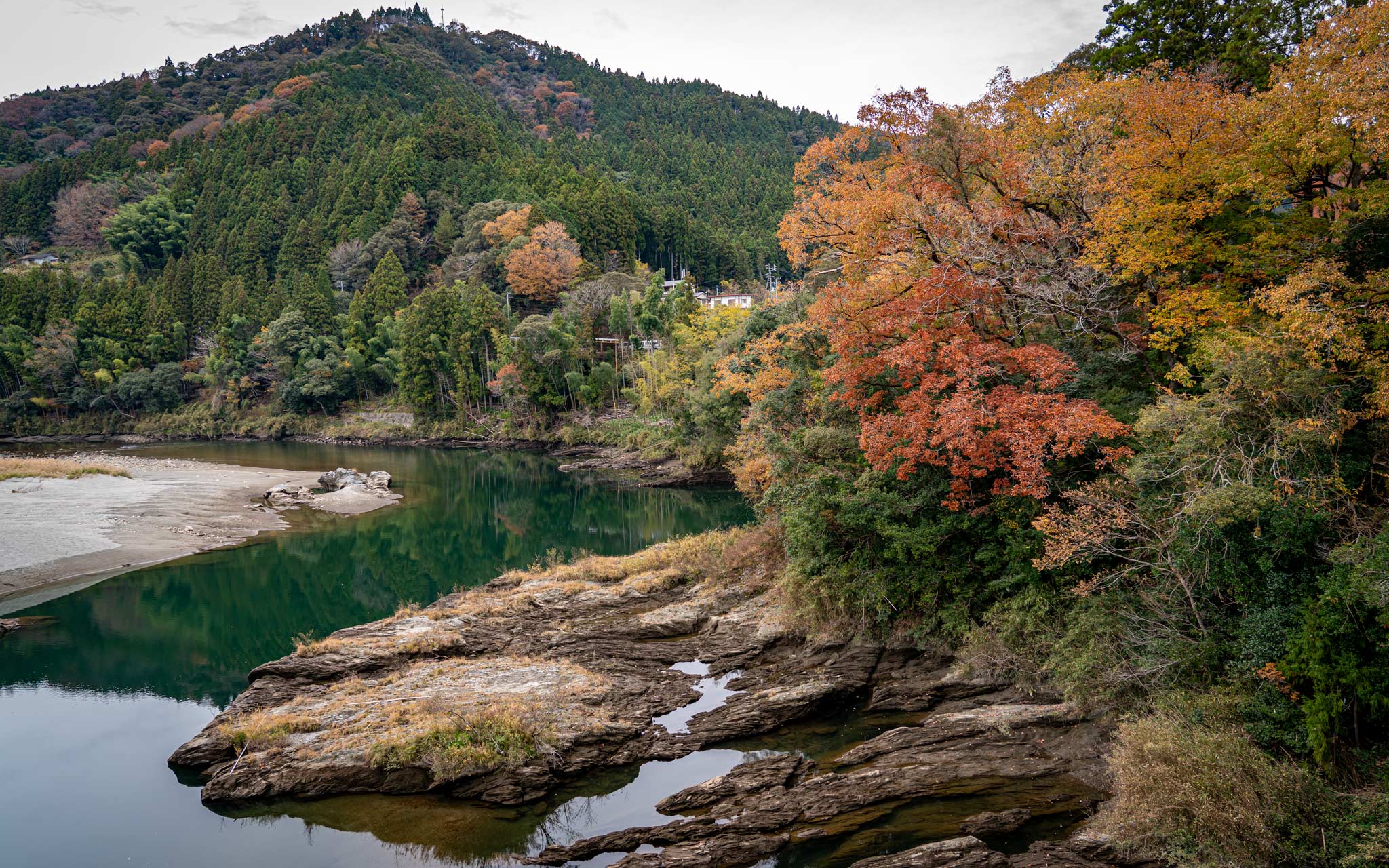
Aikawa Tanada terraced rice fields & Keigetsu Sake Brewery
Firstly, this spot is quite stunning. Surrounded by rice terraces, you’ll also find a winery (surprised me too!) nearby.
Keigetsu Brewery is renowned and has even won the world gold award for Sake; such is the quality of its produce. While there are countless Sake houses across the country, if you haven’t yet visited one and have a car, this is a great place to come for a sampling, and if you are really lucky, able to secure a tour of the traditional production house.
You’ll learn about polishing numbers which reflect on the quality of the sake, be able to taste various types, and, as I said if you can, join a tour with the Sake brewery to learn more about the methods from the master.
Cooking Katsuo no Tataki (Seared Bonito) at Kuretaishomachi Market
You go to the fresh fish stalls and select what you fancy to eat; this is then cooked and prepared for you and served up in the cute warm room where tea and other drinks can be added to complete the meal.
What is really cool though, is if you ask nicely you’ll probably be allowed to cook Katsuo no Tataki, the famous local dish, yourself. Leftover hay is thrust into the flames, and this hay added the flavour to the fish. It’s quickly sealed on both sides over the flame, before being expertly sliced and served with an adapted soy sauce and wasabi and salt. It was cool to get stuck into the market scene and have a go at making my own version of this local speciality, a type of seared sushi. By all accounts, I think i did a pretty good job too!
More Info | Location | Car or nearest station: Tosa-Kure
Kochi Prefecture – South
From underwater observatories on dramatic coastal walks, to the serene Shimanto river well equipped for water-sports, I’ve saved my favourite part of the Kochi Prefecture for last!
Shimanto River
The Shimanto River winds slowly through the countryside. A beautiful calm and mirror like surface early in the day, with mist loitering around just after sunset. Small villages and towns await along the river banks, easily explored by bicycles with roads and paths crossing the river in the form of submersible bridges, quite a design idea. The river is one of two standout water attractions in the region, and, in my view, best explored by Kayak.
More Info | Location | Car or nearest station: Ekawaski
Knife-Making Experience
Perhaps the most memorable experience for me in Kochi was this knife-making experience, located in a small workshop alongside the river.
Led by a master blacksmith, Prof. Hayashi, this hands-on experience will see you go through all stages of the knife making process, from burning hot pokers to etching the final memory on the handle. This small knife-making workshop is set amongst the greenery, and without knowing the spot on the map, you could easily miss it.
We spent a few hours (usually the experience lasts a day, but can be adapted if short on time) getting up to insanely hot temperatures, sanding and filing the iron, hammering and shaping it, until eventually it resembled a perfect knife, handle and all. The great thing about this experience is it was all run in English, which isn’t always the case in Japan, and it made it even more special being able to interact and ask lots of questions.
More Info | Car or a cycle ride from one of the nearby places above
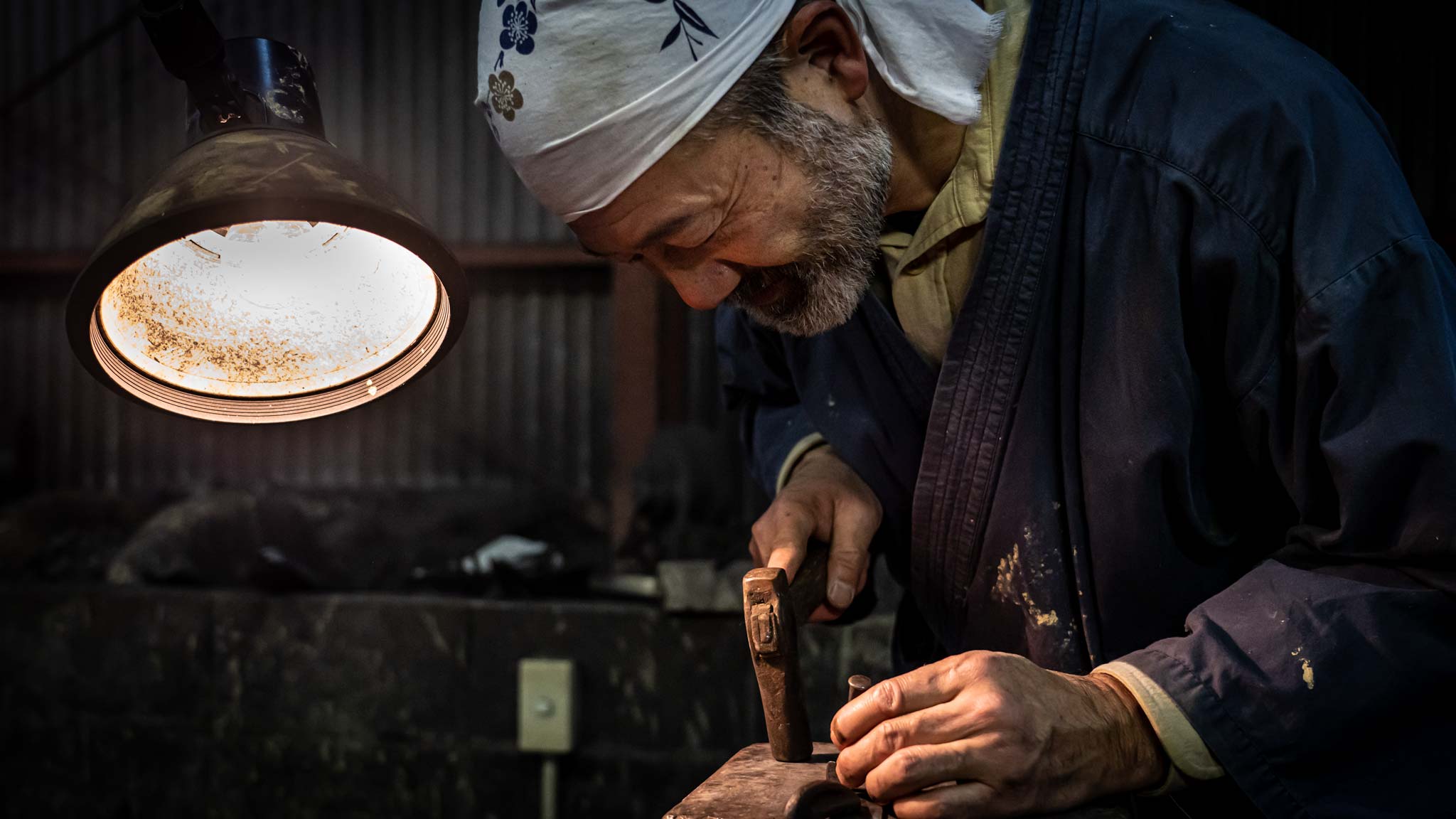
Kayaking & Cycling in Shimanto
As I mentioned above, Kayaking, Canoeing and Cycling are surely the best ways to enjoy the Shimanto river. There are plenty of places to hire a Kayak and join a group or a guide along the river, and the local cycling system is fantastic, as not only are the roads relatively clear and there are rest stops with toilets and tables, but also because the bicycles can be dropped off at various points.
More Info | Location | Car or nearest station: Ekawaski
Tatsukushi and Underwater Observatory
This is a super cool spot I found on Atlas Obscura, one of a few remaining underwater observatories which goes down into the ocean, so you are looking at a wild ‘aquarium’ rather than animals in captivity.
More Info | Location | Car or nearest station: Nakamura (followed by a bus/taxi)
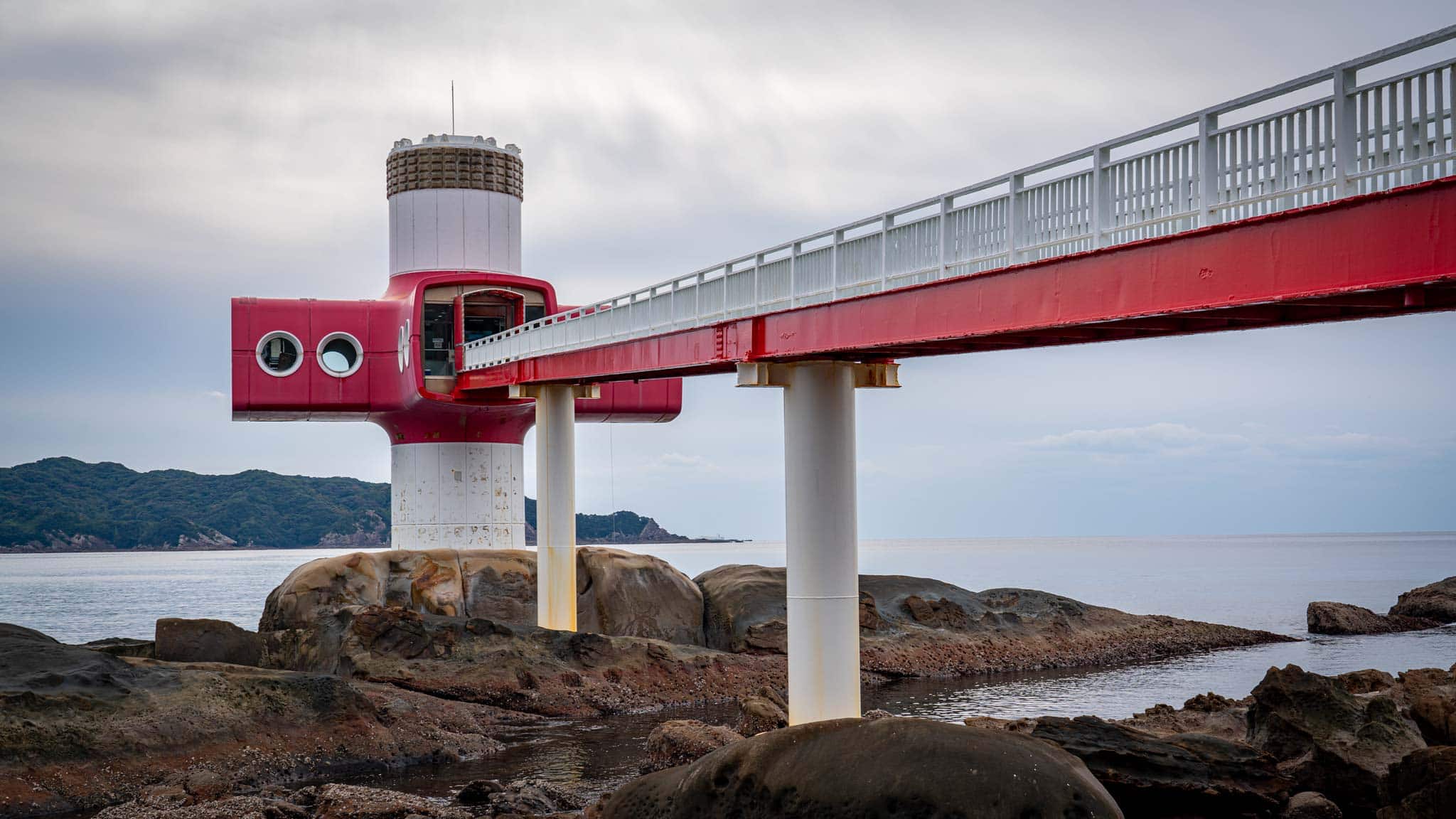
Whale and Dolphin watching IN THE WILD
There is in Kochi sadly a captive dolphin experience, but if you want to see whales or dolphins you can do so in the wild, with a few different boat tour options leaving in the south of Kochi Prefecture.
Where to stay in Kochi Prefecture
I moved around a fair bit during my trip to Kochi, and got a good feel for the different types of accommodation on offer. Below are the favourites of those which I stayed at, although there are plenty of other options throughout the region.
[/av_textblock]
Utoco Resort and Spa
North Kochi, Muroto
This gorgeous hotel has a prime position in the Muroto Global Geo Park, and the spacious rooms all have fantastic views across the ocean. The onsite restaurant served delicious meals, with multi-course menus, and the library room was a treat. The main focus is the deep-sea therapy spa, where healing waters from the depths of the ocean fill the pool and hot-tubs, and a complimentary programme of wellness activities complete the package.
Hotel Seira Shimanto
Southern Kochi, Shimanto
Located high on a hill, looking down on the Shimanto River, this hotel has comfortable and spacious rooms (book a front room for the views) and a more contemporary and basic dining and reception area. The restaurant serves up traditional breakfasts and local fish menus for diner, while the onsen has fantastic views over the river too.
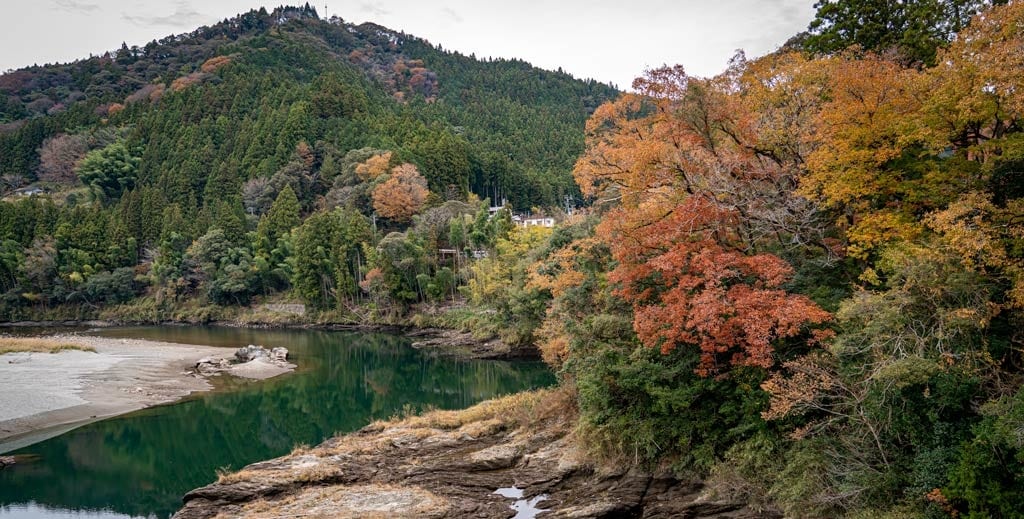
Mont Bell Outdoor Village
Central Kochi, Motoyama
A new opening, these wooden cabins are located amongst trees, and alongside a river. More suited to the wamer months, there is an onsite activity centre for water-sports, and plenty of hikes in the local area. Can be self-catering, and there is also a restaurant onsite.
Anjuan Ryokan
Southern Kochi, Shimanto
This adorable Ryokan will welcome you with open arms, and wonderful views of nature from its position perched on a hill-top. Traditional rooms, with comfortable floor futons, are spacious and warm, and an onsen is on site. The restaurant here served up a delicious spread, again, in a traditional style.
Dormi Inn
Kochi City
Located in the centre of the city, alongside the main shopping arcade, this chain hotel provides buffer breakfast, clean and well equipped rooms, and also has an onsen. Nothing ground breaking, but an affordable and comfy place to stay in Kochi city.
Sameuraso
Central Kochi, Tosa
This glass fronted hotel and restaurant boasts wonderful views from the rooms, dining hall and the terrace of the reservoir, surrounded by lush green scenery. I only visited here to eat, rather than to stay, but if you’ll have a car, it’s a cute hideaway to get amongst the nature of Kochi.
Ashizuri Pacific Hotel
Southern Kochi, Tosashimizu
In the south of Kochi, should you be visiting the underwater observatory, accommodation isn’t as readily available. While I didn’t personally stay here, it seems a great pick, with water-front views, onsens, and traditional and modern rooms to choose from.
Pilgrimages, blacksmiths, and festivals: Nine traditional experiences you can enjoy in Kochi, Japan
During my last trip to Japan, I spent just over a week exploring the Kochi Prefecture of the country, a vast green natural wonderland that is one of four prefectures on Shikoku Island. While my adventure was packed with incredible water sports, magnificent matcha noodles, and view upon view of crashing coastline, I also found time to appreciate some of the more hands-on experiences you can have in this lesser-visited region of Japan.
While I certainly couldn’t pack in everything I wished to do (one temple pilgrimage takes months to complete in fact), I still loved the chance to see those magical moments, get hands-on cooking in a market, and even came home with a knife that I had a hand in making. Heres some awesome and traditional cultural experiences you too can have in Kochi, Japan.

Knife-making at Kurogane Forge, Shimanto River
I’ll start off with my absolute highlight, which was spending the afternoon crafting my own knife (okay, with a fair bit of help) at Kurogane Forge just alongside the stunning Shimanto River.
Led by a master blacksmith, Prof. Hayashi, this hands-on experience will see you go through all stages of the knife making process, from burning hot pokers to etching the final memory on the handle. Mine is proudly branded with the name of the destination that gave me such great memories, Kochi.
This small knife-making workshop is set amongst the greenery, and without knowing the spot on the map, you could easily miss it. On our arrival, iron sand was being turned into Iron using a Tatara, a traditional Japanese furnace.
We spent a few hours (usually the experience lasts a day, but can be adapted if short on time) getting up to insanely hot temperatures, sanding and filing the iron, hammering and shaping it, until eventually it resembled a perfect knife, handle and all. The great thing about this experience is it was all run in English, which isn’t always the case in Japan, and it made it even more special being able to interact and ask lots of questions.
Hands down, this is the memory that will stick with me the most form my time in the Kochi Prefecture.
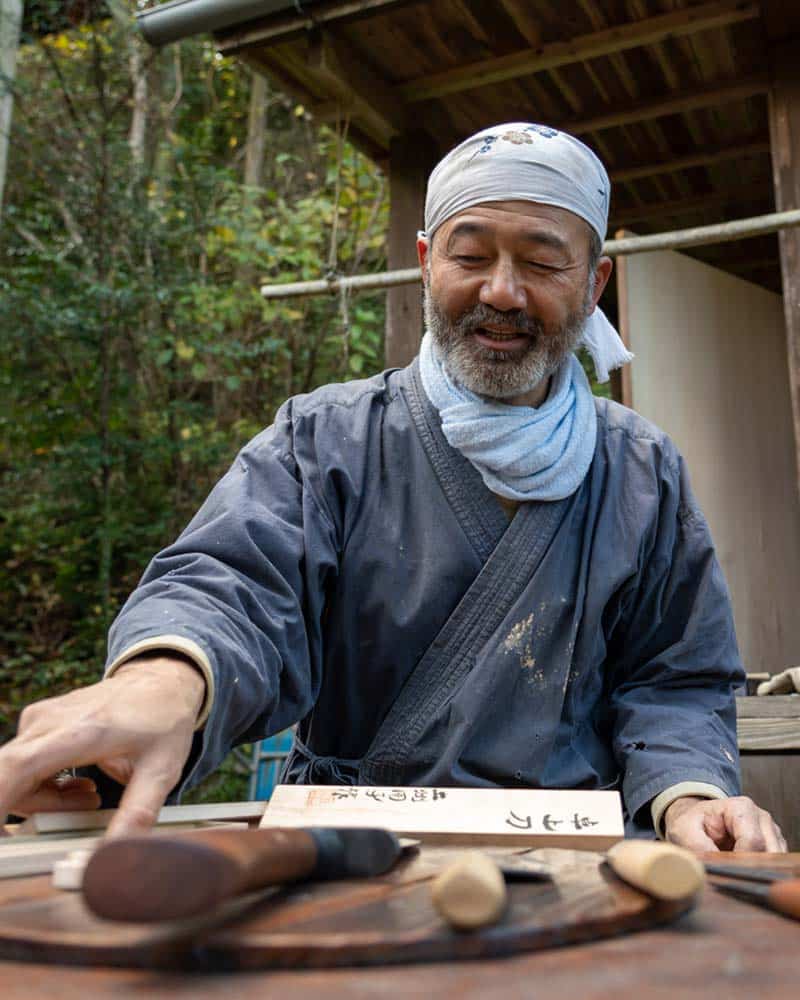
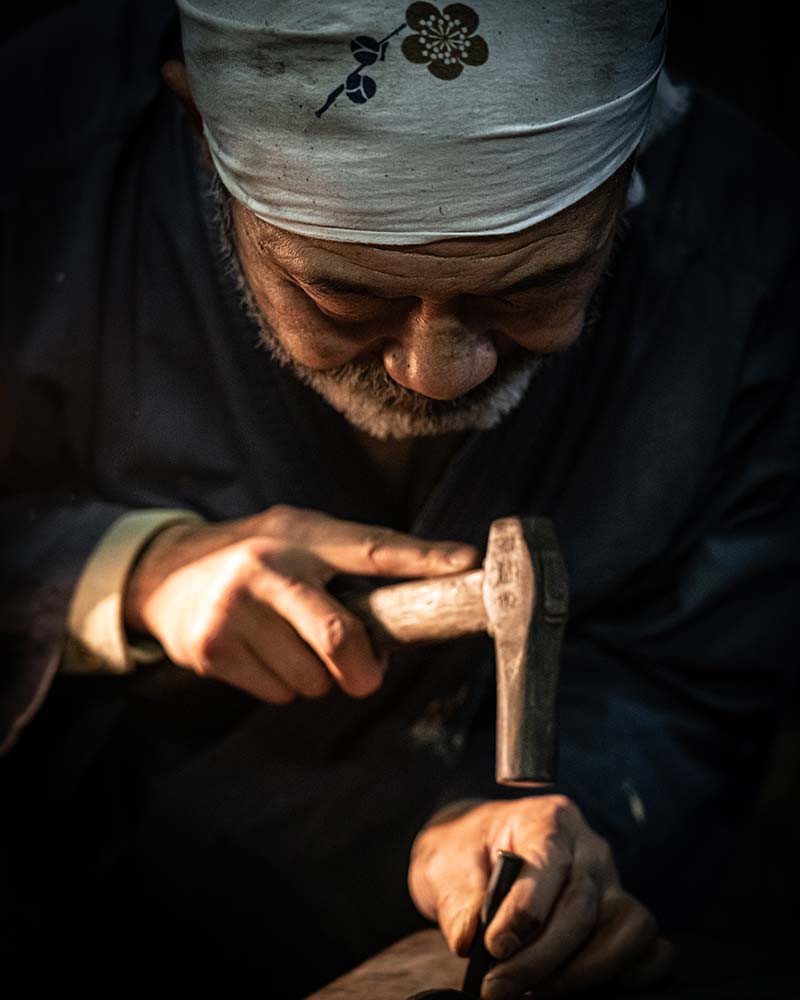
Salt-making experience, Kuroshio
The Shimanto salt-making experience was something I was keen to do in Kochi, but with timings, it came down to this or the knife-making, so I sadly had to skip it.
Not too far away, a short drive from Shimanto is the rugged coastline of Kuroshio. At this family tun spot, Tosa no Shiomaru is produced, which roughly translates to sunshine salt. Still producing salt in a traditional way, this striking open to the elements spot set against the coast is impressive.
The actual workshops last around an hour and a half, where I was told you get to tour the production area, and then get stuck into the experience of making the salt, to take your own small-batch home. There is apparently a whole host of salt-based treats you can sample here, even salty ice-cream!
Cooking Katsuo no Tataki, Kuretaishomachi Market
Pulling into Nakatosa, I was starving and ready to hit the markets to sample even more of the local Bonito, a fish-based staple in the region.
Here though, the fresh-fish market has an added bonus that visitors like me, who don’t have a kitchen to go back to, can still enjoy the flavours of the catch of the day, thanks to an onsite ‘eating space’ – similar to a restaurant, but with a twist.
You go to the fresh fish stalls and select what you fancy to eat; this is then cooked and prepared for you and served up in the cute warm room where tea and other drinks can be added to complete the meal.
What is really cool though, is if you ask nicely you’ll probably be allowed to cook Katsuo no Tataki, the famous local dish, yourself. Leftover hay is thrust into the flames, and this hay added the flavour to the fish. It’s quickly sealed on both sides over the flame, before being expertly sliced and served with an adapted soy sauce and wasabi and salt. It was cool to get stuck into the market scene and have a go at making my own version of this local speciality, a type of seared sushi. By all accounts, I think i did a pretty good job too!
If you aren’t able to get to Nakatosa, which is beyond Kochi city itself, there are a couple of restaurants I was told in the city (such as here) which have small flame bits on the table to have it freshly seared by your own hands too.
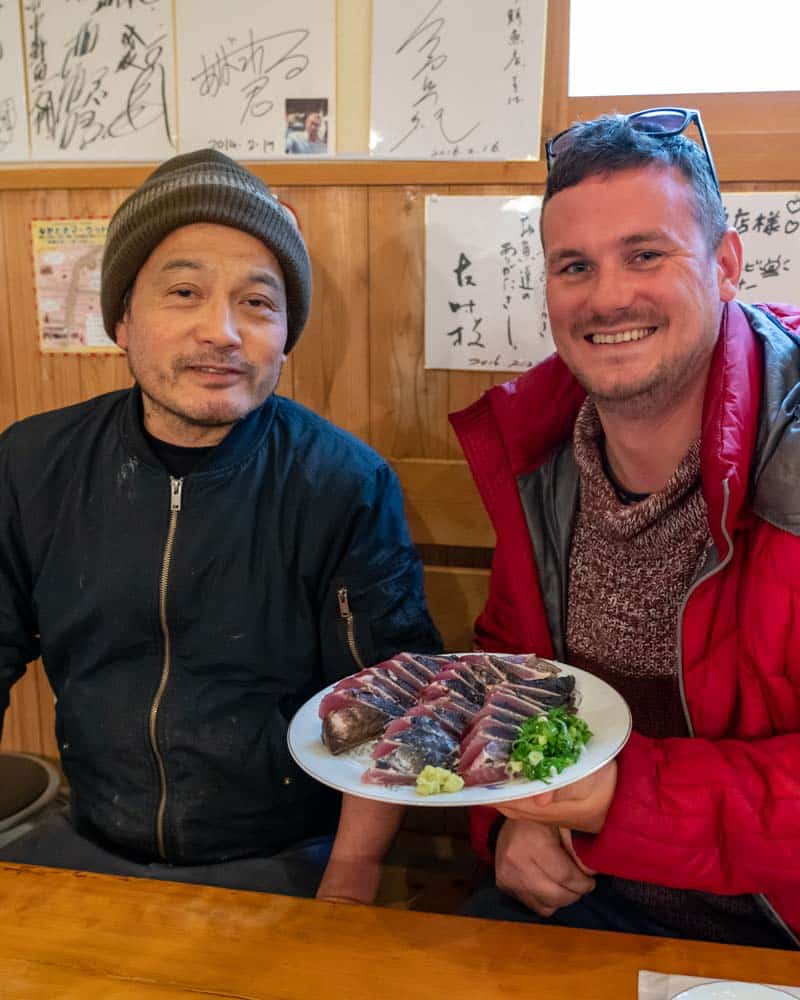

Washi paper making experience, Inochō
Located inside the Inochō Paper Museum, you’ll find a chance to have a go at making a special type of paper, Tosa Washi.
Kochi Prefecture was previously named Tosa, hence the name, and Tosa Washi has since been officially designated as a traditional handicraft in the country.
The lesson experience will see you make the paper yourself using one of two different methods. Involving bamboo frames (suketa), water and the raw materials, you’ll eventually have blended the fibres together ready for drying, and the final paper in all its glory. While it’s drying, you can explore the museum to learn more about the history of this method beloved in Kochi.
A multi temple pilgrimage across Shikoku Island
One of the coolest things in Shikoku, the island of which Kochi is one of four prefectures, is the multi-temple pilgrimage which takes in the eighty-eight temples across the island that have been designated part of the trail.
The Kochi Prefecture has some of these, and it’s really magical not just to see the temples, but also to see the pilgrims in their traditional white outfit and conical hats, as they pray or rest on the route. I was told one of the reasons people are so friendly in Kochi is they are so used to welcoming in visitors and pilgrims along the trail and showering them in hospitality.
Two of my favourite temples on the route were Hotsumisakiji Temple, a beautiful wooden collection of buildings nestled in the Muroto GeoPark in the north, and Chikurinji Temple, a bright red five-tier pagoda not far from Kochi Airport.
While historically people would spend weeks and months completing the pilgrimage, now it’s quite common for people to do it in stages, on weekends and days off, and finish it slowly over a more extended time period. Ultimately, the Ohenro (the Buddhist term for the pilgrimage) is about the journey, rather than the goal, so while completing a visit to each temple is important, what is discovered and experience on the way is even more so.
While I was in Japan, what was really cool was that Kochi Castle (so, not a temple but still striking) had been turned into a digital art display with team lab.
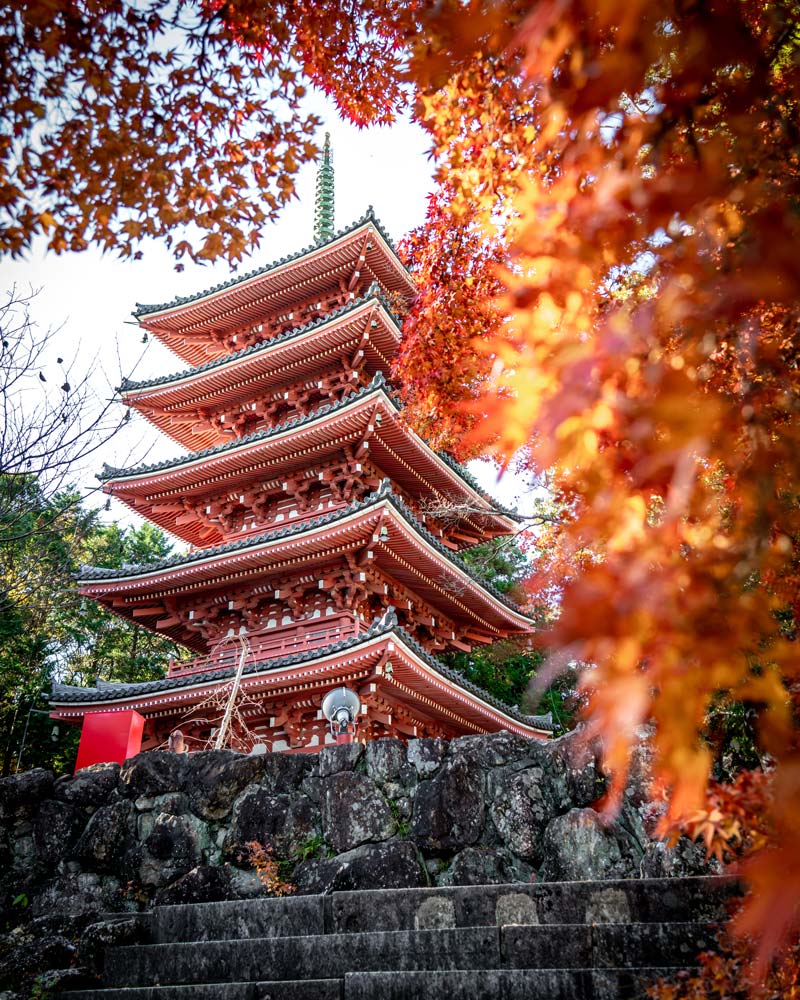

Onsen and Ryokan experience
It happened, I finally got naked with some strangers in Japan!
For those that don’t know, an Onsen is a traditional Japanese hot spring bath, where you come to bathe and relax in the particular water. There are thousands of these across the county, and everywhere I stayed in Kochi Prefecture had one. Male and females are separated, and once you’ve got over the initial shock of taking your clothes off and scrubbing yourself clean before entering, the experience is really relaxing, and you almost forget you are all sat there naked as your body aches and pains fade away!
Another must-do traditional experience in Japan is to stay in a Ryokan, an inn style accommodation which nearly always have an Onsen, and have calming matted floors and offer robes (yukata) to wear around the accommodation.
Here is where you’ll find the traditional futon style bedding on the floor, which are surprisingly comfy, and meals are also often taken sat at the floor in a traditional way. Even if you don’t plan to stay in this style for your whole trip, you should try to spend at least one night at one. I did this on my trip at Anjuann Rykonan, which not only was lovely inside but sat on top of a hill and offered sweeping views of the nature Kochi is famed for.
Sampling Sake at Keigetsu Brewery (and the local drinking games)
Firstly, this spot is quite stunning. Surrounded by rice terraces, you’ll also find a winery (surprised me too!) nearby.
Keigetsu Brewery is renowned and has even won the world gold award for Sake; such is the quality of its produce. While there are countless Sake houses across the country, if you haven’t yet visited one and have a car, this is a great place to come for a sampling, and if you are really lucky, able to secure a tour of the traditional production house.
You’ll learn about polishing numbers which reflect on the quality of the sake, be able to taste various types, and, as I said if you can, join a tour with the Sake brewery to learn more about the methods from the master.
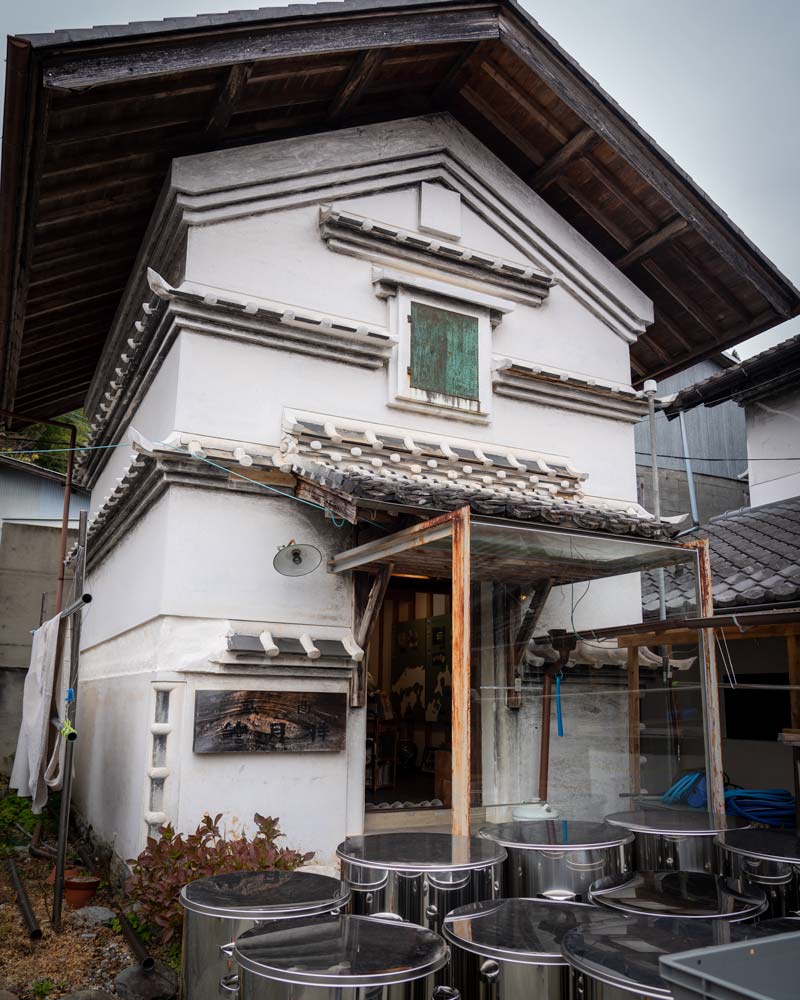
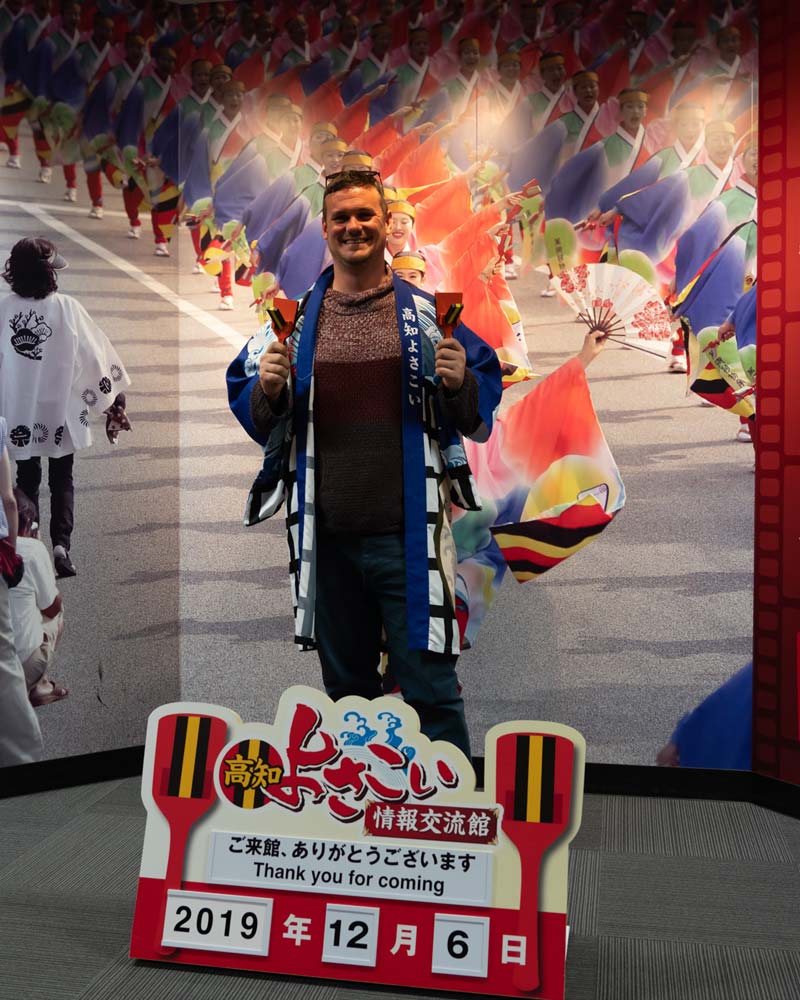
Yosakoi dance festival and museum, Kochi City
Every August the city of Kochi comes alive for the Yasakoi dance festival with some 300 groups performing to crowds of thousands. The streets and corners of the city are taken over, as competitions to crown the best play out on domestic news channels.
Dating back to 1954, the festival was a chance to bring everyone together after a painful time. It’s blossomed and grown over the years, and now takes place worldwide, although it originals hail from Kochi. Elaborate costumes and well-rehearsed routines are more significant and bolder than when the festival first started, but the rules remain the same.
The dance must use the Naruko, a type of clapper within the dance. The music can be as wished but must include part of the original song. Also, a vehicle acting as a float must accompany the group playing the music. The dance groups can be up to 150-strong, and this makes for a flurry of colour and music over the days the event runs.
If you don’t visit Kochi during the festival, but want to learn more about the Yosakoi, a brand new museum is now open, and although a lot of the information isn’t in English, guides can help, or you can just have a go at the dance in the ‘classroom’, see the bright costumes, and watch performance videos from years gone by.
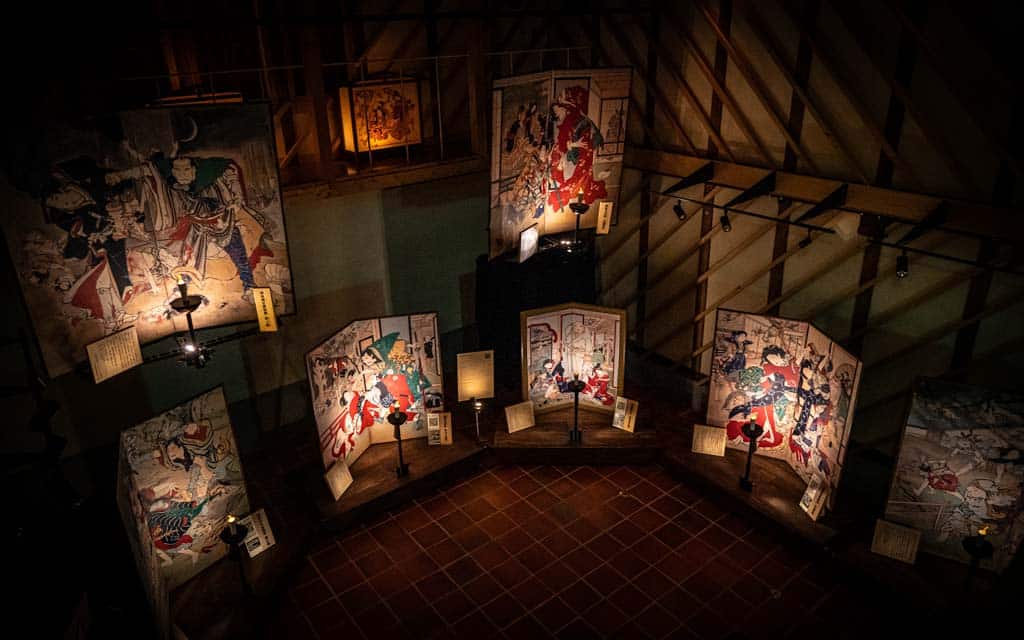
Ekin Museum and Festival, Akaokacho
The Ekin Museum offers an insight into the artwork and life of Hirose Kinzō (also known as Ekin), a disgraced official painter whose career turning into something quite interesting after his royal downfall.
I didn’t really plan on visiting the museum, but it’s quite a fascinating story. Ekin was born into a working-class family in Kochi but eventually wound up as a head painter for the important family at the height of the Tosa Domain. He was accused of forging work, and fired from his role, then disappearing from the public eye for ten years.
Eventually, he reappeared with this very unique, and sometimes quite disturbing artworks, projecting multiple scenes from one story onto one large canvas.
While copies of the works can be seen in the museum year-round, In July, a festival takes place on the streets of Akaokacho, where the original paintings are taken outside and illuminated by candlelight in the traditional way. Locals and regional tourists especially flock for this eerie evening of arts and entertainment, so if you find yourself in Kochi in July, check out the festival dates to join in.
There is so much more to do in Kochi, with nature, rivers, forest and striking coastline being the main draw to the prefecture. But, with this list, I hope I’ve highlighted some of the more traditional cultural experiences you can have to compliment your water-sports and adventure activities, because it’s these moments that create the best memories!
Getting to Kochi
Getting to Kochi is relatively easy from Tokyo and other large cities. Here is how to get from Tokyo to Kochi and some of the options available to you.
By Flight:
From Tokyo, there are multiple connections per day from both airports, on different airlines such as ANA and JAL. There are also, less regular, flight connections from Kobe, Fukuoka, Kansai and Nagoya.
Use a search engine such as Skyscanner, when looking for domestic flights if you opt to fly to Kochi.
By Train:
Japan’s rail routes and bullet trains are famous world round for a reason, meaning transport by train, while perhaps not the fastest option, is certainly possible into the Kochi Region. The Visit Kochi Travel Planner is a great resource, as you can select where you are travelling from, and then it will tell you the best train connection options.
Getting around Kochi Prefecture
Kochi Prefecture doesn’t have the all singing and dancing train routes that some of the larger regions has, but it is entirely possible to explore between the main sights by bus and train connections. The train routes between attractions can be limited, however, by needing to change to different lines. It’s quite a complex system, especially when you through in the buses, and while I’ve highlighted the main stops up above, be sure to check out Rome2Rio to research the best route for you.
The Shikoku Rail is one of the most scenic, heading inland, and on the coast for the most part you have the cool Gomen Nahari & Yodo Line. Bus options are also there, with the MY-YU bus being for tourists to sight see from the capital city, Kochi, while domestic local bus routes can be checked out here.
Carry an international license when driving and have relevant insurance.
[/av_textblock]
Kochi weather & climate
The climate in Kochi is still relatively pleasant even in the winter months when I visited, that said, for those planning to do more water sports, the warmer months are more ideal. Kochi sometimes is hit by Tsunamis, although evacuation routes and man-made platform stations are detailed everywhere, showing how prepared the region is incase of natural disaster.
When to visit Kochi Prefecture
Peak Season: July, August and September are peak summer months here, when the weather is hitting above 30 degrees celsius and nearly all activites are open.
Shoulder Season: April, May, June, and October seem prime time to visit, as most attractions are open, and the weather is a pleasant temperature.
Off Season: The winter season, especially late December and January sees some activities close down, the weather IMO was still fine to explore, and the prices were more welcoming (except over the New Year Holiday – Western Christmas is not a public holiday in Japan).




Leave a Reply
Want to join the discussion?Feel free to contribute!